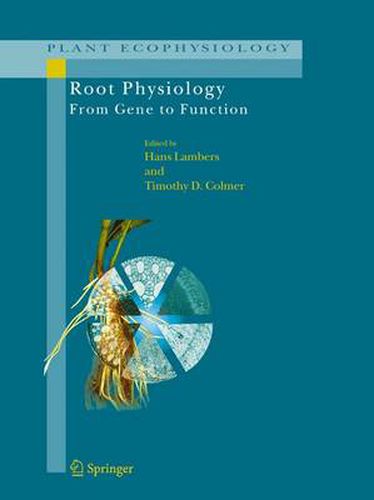Readings Newsletter
Become a Readings Member to make your shopping experience even easier.
Sign in or sign up for free!
You’re not far away from qualifying for FREE standard shipping within Australia
You’ve qualified for FREE standard shipping within Australia
The cart is loading…






In the last decade, enormous progress has been made on the physiology of plant roots, including on a wide range of molecular aspects. Much of that progress has been captured in the chapters of this book. Breakthroughs have been made possible through integration of molecular and whole-plant aspects. The classical boundaries between physiology, biochemistry and molecular biology have vanished. There has been a strong focus on a limited number of model species, including Arabidopsis thaliana. That focus has allowed greater insight into the significance of specific genes for plant development and functioning. However, many species are very different from A. thaliana, in that they are mycorrhizal, develop a symbiosis with N2-fixing microsymbionts, or have other specialised root structures. Also, some have a much greater capacity to resist extreme environments, such as soil acidity, salinity, flooding or heavy-metal toxicities, due to specific adaptations. Research on species other than A. thaliana is therefore pivotal, to develop new knowledge in plant sciences in a comprehensive manner. This fundamental new knowledge can be the basis for important applications in, e.g., agriculture and plant conservation. Although significant progress has been made, much remains to be learnt. It is envisaged that discoveries made in the recent past will likely lead to major breakthroughs in the next decade.
$9.00 standard shipping within Australia
FREE standard shipping within Australia for orders over $100.00
Express & International shipping calculated at checkout
In the last decade, enormous progress has been made on the physiology of plant roots, including on a wide range of molecular aspects. Much of that progress has been captured in the chapters of this book. Breakthroughs have been made possible through integration of molecular and whole-plant aspects. The classical boundaries between physiology, biochemistry and molecular biology have vanished. There has been a strong focus on a limited number of model species, including Arabidopsis thaliana. That focus has allowed greater insight into the significance of specific genes for plant development and functioning. However, many species are very different from A. thaliana, in that they are mycorrhizal, develop a symbiosis with N2-fixing microsymbionts, or have other specialised root structures. Also, some have a much greater capacity to resist extreme environments, such as soil acidity, salinity, flooding or heavy-metal toxicities, due to specific adaptations. Research on species other than A. thaliana is therefore pivotal, to develop new knowledge in plant sciences in a comprehensive manner. This fundamental new knowledge can be the basis for important applications in, e.g., agriculture and plant conservation. Although significant progress has been made, much remains to be learnt. It is envisaged that discoveries made in the recent past will likely lead to major breakthroughs in the next decade.